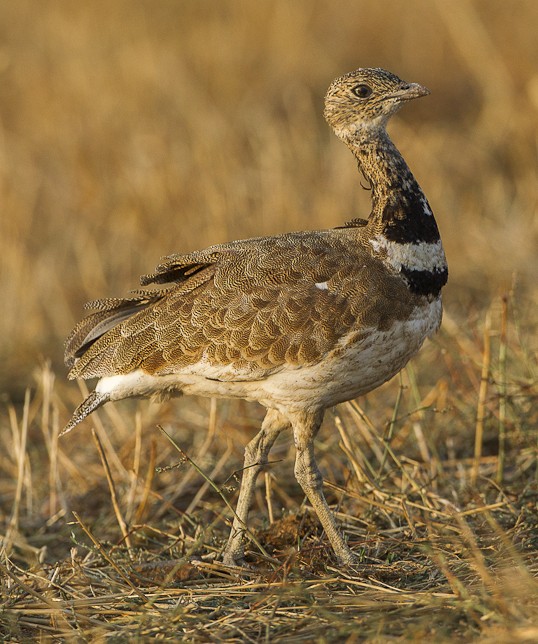Little Bustard
A species of Little Bustards Scientific name : Tetrax tetrax Genus : Little Bustards
Little Bustard, A species of Little Bustards
Botanical name: Tetrax tetrax
Genus: Little Bustards
Content
Description General Info
 Photo By Francesco Veronesi , used under CC-BY-SA-2.0 /Cropped and compressed from original
Photo By Francesco Veronesi , used under CC-BY-SA-2.0 /Cropped and compressed from original Description
The little bustard (Tetrax tetrax) is a large bird in the bustard family, the only member of the genus Tetrax. The genus name is from Ancient Greek and refers to a gamebird mentioned by Aristophanes and others. It breeds in southern Europe and in western and central Asia. Southernmost European birds are mainly resident, but other populations migrate further south in winter. The central European population once breeding in the grassland of Hungary became extinct several decades ago. This species is declining due to habitat loss throughout its range. It used to breed more widely, for example ranging north to Poland occasionally. It is only a very rare vagrant to Great Britain despite breeding in France. Although the smallest Palearctic bustard, the little bustard is still pheasant-sized at 42–45 cm (17–18 in) long with a 90–110 cm (35–43 in) wingspan and a weight of 830 g (29 oz). In flight, the long wings are extensively white. The breeding male is brown above and white below, with a grey head and a black neck bordered above and below by white. The female and non-breeding male lack the dramatic neck pattern, and the female is marked darker below than the male. Immature bustards resemble females. Both sexes are usually silent, although the male has a distinctive "raspberry-blowing" call: prrt. This species is omnivorous, taking seeds, insects, rodents and reptiles. Like other bustards, the male little bustard has a flamboyant display with foot stamping and leaping in the air. Females lay 3 to 5 eggs on the ground. This bird's habitat is open grassland and undisturbed cultivation, with plants tall enough for cover. Males and females do not differ markedly in habitat selection. It has a stately slow walk, and tends to run when disturbed rather than fly. It is gregarious, especially in winter. Tracking of male Little Bustards has revealed that they are nocturnal migrants that make frequent stopovers in non-irrigated and irrigated croplands to reach more productive agricultural post-breeding areas. On 20 December 2013, the Cypriot newspapers 'Fileleftheros' and 'Politis', as well as news website 'SigmaLive', reported the discovery of a dead little bustard in the United Nations Buffer Zone. The bird had been shot by poachers hunting illegally in the zone. The shooting was particularly controversial amongst conservationists and birders since the little bustard is a very rare visitor to Cyprus and had not been officially recorded in Cyprus since December 1979. 
Size
43 cm
Nest Placement
Ground
Feeding Habits
Little Bustard primarily consumes invertebrates like beetles and grasshoppers, as well as plant materials including shoots, leaves, and seeds. Animal prey is favored in summer, while plant intake increases during winter, showcasing a seasonal dietary shift.
Habitat
Little Bustard is predominantly found in open habitats like steppes, grasslands, and agricultural fields, particularly those with vegetation over 20 cm tall. These areas must be rich in plant diversity and arthropods, with pastures being preferred over croplands. Habitat preferences for little Bustard change with region and sex, as males often occupy fallow fields for feeding and display, while breeding females require varied vegetation across the breeding season for different activities.
Dite type
Granivorous
General Info
Feeding Habits
Bird food type
Species Status
Not globally threatened.
Scientific Classification
Phylum
Chordates Class
Birds Order
Bustards Family
Bustards Genus
Little Bustards Species
Little Bustard